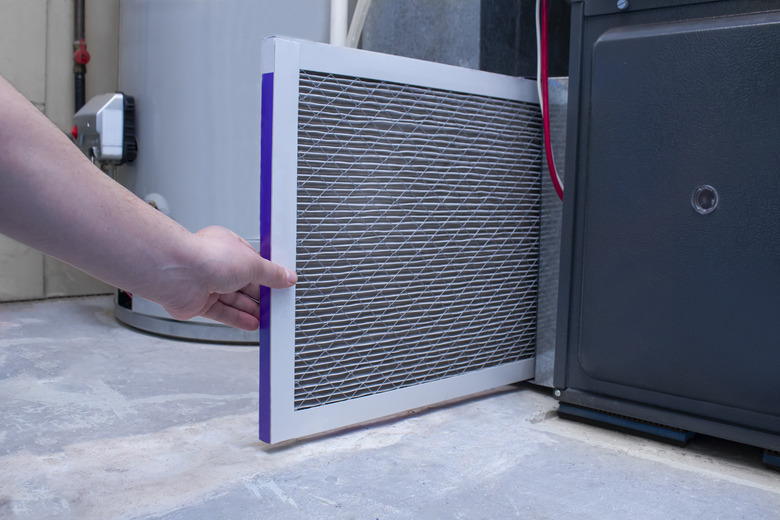How Do Electrostatic Air Filters Work?
You know you need to change your furnace filter regularly to keep the system running efficiently. But have you ever wondered if different types of filters, like electrostatic filters, are worth it? Understanding how electrostatic air filters work helps you decide if they're right for your HVAC system.
Tip
Electrostatic filters use an electrostatic charge to attract airborne particles and keep them trapped until you wash the filter.
Electrostatic Air Filter Design
Electrostatic Air Filter Design
Electrostatic air filters are typically rectangular and between 1/2 and 1 inch thick. They're available in various dimensions, just like ordinary disposable fiberglass filters, to fit a wide range of HVAC systems. But because electrostatic filters are reusable, their outside frames are typically made of aluminum, compared to the cardboard frames of disposable fiberglass filters.
The filtration media in an electrostatic air filter has several layers. On the air duct side of the filter, there are usually two to six layers of woven polyurethane and polypropylene fibers, which look much like the fiberglass filtration media of disposable filters.
On the vent side of the filter, there is usually a thin polyester mesh. Both sides are often covered with aluminum grates with chain-link style patterns. These grates don't actually filter particles from the air. Instead, they give the furnace filters shape and rigidity.
How Electrostatic Air Filters Work
How Electrostatic Air Filters Work
The secret to the electrostatic air filter's effectiveness is the polyurethane and polypropylene blends used in the filtering material. The fibers have been formulated so that when air passes by them, they generate strong static charges. Separate layers of filtration material also receive opposite charges (positive and negative).
Since positively charged particles are attracted to surfaces with negative static charges and vice versa, the filtration media can actually attract airborne particles like a magnet and hold on to them until the filter is cleaned. When a particle of dust, mold, fungi or any other airborne matter comes from the HVAC system and through the ducts toward the filter, it first passes through a synthetic filter layer with a positive static charge.
This positive charge gets transferred to the airborne particle. Then the particle passes through a layer with a negative charge, and it is attracted to that layer's surface. The more layers of oppositely charged filtration media there are in the filter, the more effectively it can prevent airborne particles from entering the room.
Cleaning and Reusing Electrostatic Filters
Cleaning and Reusing Electrostatic Filters
Electrostatic filters are made from durable materials and are usually several times the cost of an equivalent disposable filter, so they're often used for several years. Every month or so, it's a good idea to clean accumulated particles from the filtration media. To do this, the filter must be removed from the unit.
The easiest way to clean an electrostatic filter is to use a vacuum cleaner hose attachment to suck dust and dirt directly off of the duct side of the filter. If this is done on a regular basis, deeper cleaning may never be needed.
But if the filter is very dirty, it can be flushed clean with a garden hose. Always spray the filter with water going in the opposite direction of the air flow. That way, accumulated particles can be flushed out of the filter without accidentally driving them deeper into the filtration material.
